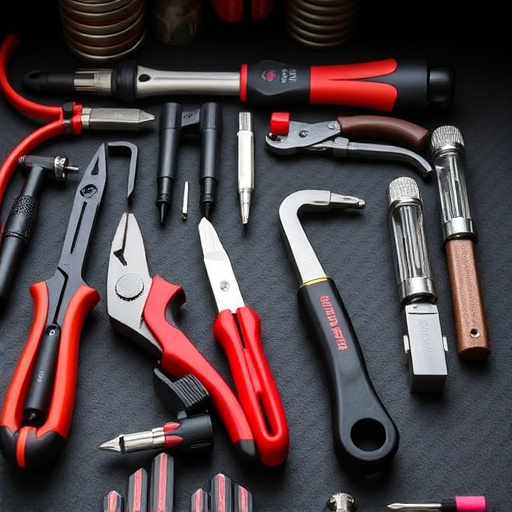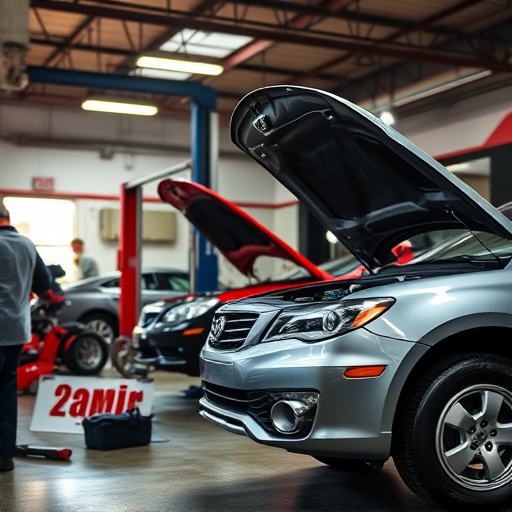Mercedes THERMOTRONIC repair involves addressing air quality sensor malfunctions to maintain optimal cabin comfort. Diagnosing issues with modern tools, inspecting for damage, and replacing sensors if necessary are key steps. Accurate repairs require structured procedures, proper installation, calibration, and testing by experienced technicians. Regular maintenance prevents future complications and ensures the longevity of this advanced climate control technology.
Experience a dip in vehicle performance or erratic heating? You may be dealing with a malfunctioning Mercedes THERMOTRONIC air quality sensor. This comprehensive guide delves into the intricate world of Mercedes THERMOTRONIC systems, helping you understand sensor malfunction symptoms and offering clear, step-by-step repair instructions for optimal performance. By the end, you’ll be equipped to tackle this common issue head-on.
- Understanding Mercedes Thermotronic Systems
- Diagnosing Air Quality Sensor Malfunction
- Repair Steps for Optimal Performance
Understanding Mercedes Thermotronic Systems

The Mercedes THERMOTRONIC system is a sophisticated climate control mechanism designed to maintain optimal cabin comfort. It’s more than just an AC unit; it’s a complex network that regulates temperature, humidity, and air quality within the vehicle. Central to this system is the air quality sensor, which monitors the presence of various pollutants and adjusts the filtration process accordingly. When this sensor malfunctions, it can lead to issues like poor air quality, uncomfortable driving conditions, and even potential health hazards for occupants.
Understanding how the THERMOTRONIC system operates is crucial for effective Mercedes THERMOTRONIC repair. This involves not just replacing faulty components but also ensuring that other related systems, such as tires services and automotive body work, are in good condition. Proper maintenance and timely repairs can prevent further complications and ensure the longevity of this advanced climate control technology.
Diagnosing Air Quality Sensor Malfunction

Diagnosing a malfunction in the air quality sensor is a crucial step in any Mercedes THERMOTRONIC repair process. This compact yet vital component plays a significant role in maintaining optimal cabin air quality, ensuring comfort and minimizing allergens for passengers. When issues arise, it’s essential to identify the problem promptly. Modern vehicles are equipped with sophisticated diagnostic tools that allow auto repair services to connect to the car’s computer network, retrieving error codes and data from various sensors, including the air quality sensor.
By utilizing these tools, technicians can efficiently pinpoint whether the sensor itself is faulty or if there are issues with its communication within the vehicle’s system. It’s important to differentiate between this sensor malfunction and other common problems, such as poor ventilation or a damaged cabin filter, which may present similar symptoms. This meticulous process ensures that the root cause is accurately identified before proceeding with any Mercedes THERMOTRONIC repair, be it replacing the sensor itself or addressing related components like auto glass repair or dent repair.
Repair Steps for Optimal Performance

When addressing a Mercedes THERMOTRONIC malfunction caused by an air quality sensor issue, following a structured repair process ensures optimal system performance. Begin by accessing the sensor, typically located in the vehicle’s intake or exhaust system. Carefully inspect for any visible damage or debris that might be obstructing its function. Next, use a suitable diagnostic tool to check the sensor’s reading and compare it with the expected values. If the sensor is faulty, replacement is the recommended step.
For precise results, consult your vehicle’s service manual or seek guidance from experienced technicians at a reputable car repair shop or collision center. These professionals have the tools and expertise to navigate complex systems like Mercedes THERMOTRONIC effectively. They’ll ensure proper installation of the new sensor, calibrate it according to manufacturer specifications, and perform thorough testing to guarantee seamless integration and optimal air quality control in your vehicle.
In conclusion, understanding and addressing Mercedes THERMOTRONIC system issues, particularly air quality sensor malfunctions, is key to maintaining optimal vehicle performance. By following the outlined diagnosis and repair steps, car owners can effectively resolve these problems. Remember that prompt action on sensor malfunctions not only enhances air quality but also ensures your Mercedes delivers a smooth, efficient driving experience.














